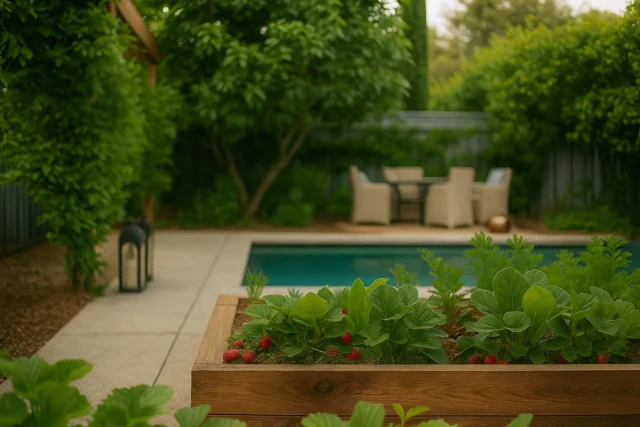When you’re ready to make lasagna with no-boil noodles, you’ll find it’s a straightforward process that saves time without sacrificing flavor. Start by crafting a rich meat sauce that’ll serve as the backbone of your dish. As you prepare your cheese mixture, think about how each layer contributes to the overall taste and texture. Once you begin layering, you’ll see how simple adjustments can elevate the dish. But before you pop it into the oven, there are a few essential tips that can make all the difference in achieving that perfect, bubbly finish.
Table of Contents
Toggle
Preparing the Baking Dish
To kick off preparing your baking dish, choose the right size for your lasagna. An 8×8-inch square baking dish works well for smaller portions, while a 9×13-inch baking dish is perfect for larger lasagna.
Make certain the dish has sides that can handle the layers and is at least 2 inches deep. If you’re using regular noodles, don’t forget to grease the dish to prevent sticking.
Preheat your oven to 350°F for most recipes, or 375°F if specified. Preheating is essential, so get that oven temperature right while you assemble your lasagna layers. This guarantees even cooking and a delicious finish. Additionally, using no-boil noodles simplifies the process, as there’s no need for boiling before layering.
Cooking the Meat Sauce
The heart of a delicious lasagna lies in its flavorful meat sauce. Start by heating 3-4 tablespoons of olive oil in a pan over medium-high heat.
Brown ground beef, ground chuck, or ground round until there’s no pink left, adding chopped onion and garlic for depth. Drain any excess fat.
For flavor enhancement, stir in minced garlic, chopped carrot, crushed red pepper, black pepper, salt, garlic powder, and Italian seasoning. Add bay leaves and a pinch of sugar if desired.
Next, mix in tomato paste, cooking until fragrant, then add 28 ounces of canned whole or crushed tomatoes and their juices.
Simmer on low for 20-90 minutes, stirring occasionally, to develop rich flavors before using it in your lasagna. This homemade sauce is particularly known for featuring higher-priced jarred marinara for better quality if not made from scratch.

Preparing the Cheese Mixture
Creating a flavorful cheese mixture is crucial for your lasagna. Start by combining ricotta cheese with Parmesan cheese in a bowl. Add shredded mozzarella cheese to the mix, then include one or two eggs to bind everything together. Use a fork or spatula to thoroughly blend the ingredients until smooth. For extra flavor, consider incorporating garlic powder or black pepper, and explore cheese variations based on your taste preferences. Dried parsley or Italian seasoning can be great seasoning options as well.
Once mixed, divide the cheese mixture into equal parts—typically four—to guarantee consistent layers. Adding an egg to ricotta creates a firmer layer, which enhances the overall texture of your lasagna. Keep it ready for use; it’s best applied when at room temperature for easier spreading.
Layering the Lasagna
Layering your lasagna is a key step that builds flavor and texture in every bite. Start with a thin layer of tomato sauce at the bottom of your greased baking dish to prevent sticking.
Place a layer of no-boil noodles over the sauce, followed by half of your ricotta cheese and any additional fillings like ground beef or roasted vegetables. Top this with more sauce to keep the noodles moist.
Repeat these layering techniques, ensuring each noodle placement is fully covered with sauce to facilitate cooking. Don’t overlap noodles to avoid sticking, and maintain consistent layers for balanced flavor.
Finish with sauce and a generous sprinkle of mozzarella and Parmesan for a deliciously creamy top.

Baking the Lasagna
Baking your lasagna properly guarantees it turns out delicious and fully cooked. Start by preheating your oven to the desired baking temperature, typically between 350°F to 425°F.
Here are some key steps to follow:
- Cover your lasagna with foil during the initial baking period.
- Bake at 350°F for 45 minutes, or adjust your baking time for higher temperatures.
- Monitor doneness by checking that the internal temperature reaches 165°F.
- Remove the foil for the last 10-15 minutes to achieve a bubbly, golden top layer.
With these tips, you’ll make certain your lasagna is evenly cooked and ready to impress when it’s time to serve!













